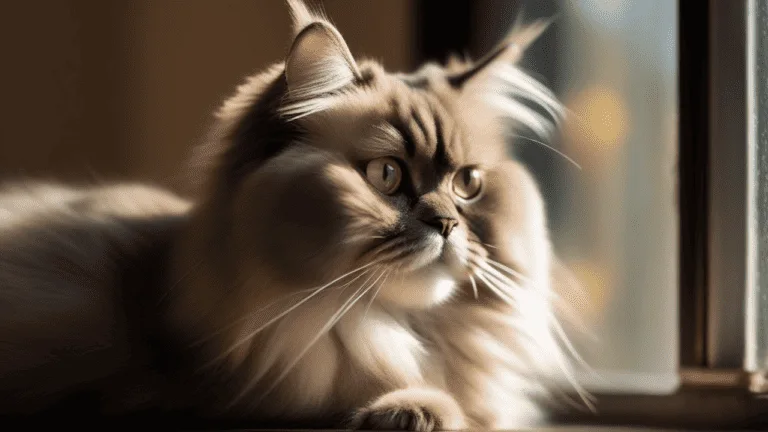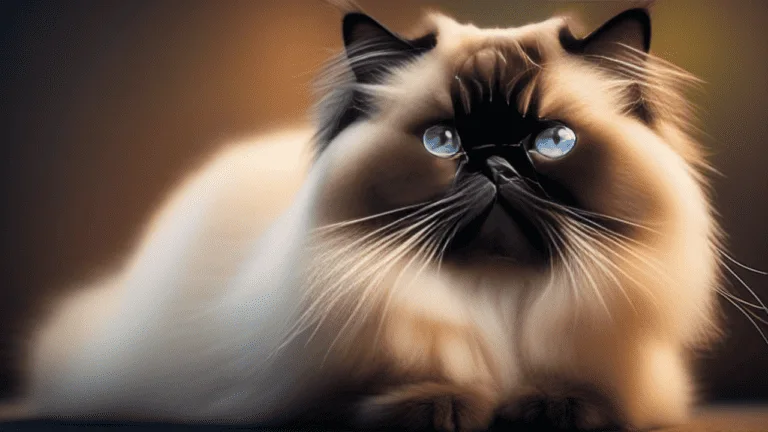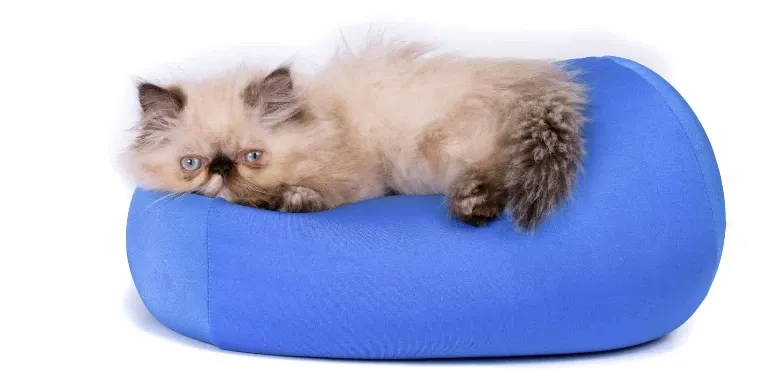The Best Fluffy Pancakes recipe you will fall in love with. Full of tips and tricks to help you make the best pancakes.

Are you torn between choosing a Persian or a Himalayan cat as your furry companion? Both breeds are undeniably adorable and have unique features that make them stand out. However, deciding which one to bring home can be a daunting task, especially when you’re looking for a long-term commitment.
It is subjective and depends on personal preference. Persian cats have a more relaxed and docile personality and require more grooming due to their long hair, while Himalayan cats have a more playful and active personality and also require grooming. Both breeds make great pets and are known for their affectionate nature.
Fear not! In this article, we’ll provide you with a detailed comparison of the two breeds, their temperaments, grooming requirements, health issues, training and intelligence, living arrangements, cost, and availability, to help you make an informed decision.
While both Persian and Himalayan cats have their distinct qualities, it’s essential to consider various factors before making a final decision. You want to ensure that you choose the cat that suits your lifestyle and personality.
With their luxurious coats, affectionate personalities, and calm demeanor, both breeds are excellent choices for indoor cats. However, there are differences between the two that you should keep in mind.
So, let’s dive into the world of Persian and Himalayan cats and explore which one might be the best fit for you.
Overview of Persian and Himalayan Cat Breeds
If you’re trying to decide between a Persian or Himalayan cat, it’s important to understand the unique characteristics of each breed. The Persian cat is known for its long, luxurious coat and flat face, which is the result of selective breeding in the 1800s. Its origins can be traced back to ancient Persia, where it was revered for its beauty and grace.
Today, Persians are popular pets due to their docile and affectionate nature, as well as their striking appearance. The Himalayan cat, on the other hand, is a cross between a Persian and a Siamese cat. It is named after the Himalayan mountains because of its pointed coloration, which resembles the snow-capped peaks.
Himalayans have the same physical characteristics as Persians, except for their pointed fur and blue eyes. They are also known for being intelligent and playful, making them great companions for families with children. Overall, both the Persian and Himalayan breeds have their own unique histories and physical characteristics that make them special in their own way.
Temperament and Personality Traits
You’ll love how the temperament and personality of these felines differ, with one being as calm as a summer breeze and the other as playful as a bouncing ball.
Persian cats are known for their laid-back attitude and love for lounging around. They are independent creatures that prefer a quiet environment. If you’re considering getting a Persian cat, it’s important to understand that they require plenty of socialization as kittens to prevent them from becoming too shy or withdrawn.
Himalayan cats, on the other hand, are more active and playful. They love to run around and play, often with their favorite toys. If you’re considering getting a Himalayan cat, it’s important to know that they are naturally social and do well with other pets in the household. Providing them with plenty of toys and interactive games can help keep them mentally stimulated and happy.
Overall, both breeds have unique personalities that make them great pets, but it’s important to consider their individual needs before making a decision.
Grooming Requirements
Grooming these fluffy felines is a must, as their long and luxurious coats require regular brushing and maintenance. Both Persian and Himalayan cats have long hair that needs to be brushed daily to prevent matting and tangling. However, Himalayan cats have a thicker coat and may require more frequent brushing compared to their Persian counterparts.
When it comes to brushing techniques, it’s important to use a comb or brush specifically designed for long-haired cats. Start by gently combing the fur from the head to the tail, making sure to get all the way down to the skin. This helps to remove any loose or dead hair, preventing shedding and keeping the coat healthy and shiny.
Regular brushing also helps to distribute natural oils throughout the fur, keeping it soft and moisturized. With proper grooming and shedding control, both Persian and Himalayan cats can maintain their beautiful, fluffy coats.
Health Issues
Unfortunately, despite their charming appearance, both Persian and Himalayan cats are prone to a variety of health issues that require careful attention. These health issues can range from minor concerns such as ear infections and eye issues to more serious issues such as kidney disease and respiratory problems.
It’s important to note that not all cats will experience these health issues, but it’s important to be aware of their potential and take preventative measures. Common health issues in Persians and Himalayans include polycystic kidney disease, hypertrophic cardiomyopathy, and bladder stones.
These health issues can lead to costly veterinary bills and require ongoing care and attention. As a responsible pet owner, it’s important to consider the potential vet care costs and be prepared to provide the necessary care for your furry friend. Regular check-ups with a veterinarian can help catch any potential health issues early on and prevent them from becoming more serious.
Training and Intelligence
If you want a cat that can learn new tricks and respond to commands, it’s important to note that both Persians and Himalayans have a reputation for being less trainable than other breeds. However, this doesn’t mean that they aren’t intelligent cats.
In fact, both breeds have a high level of intelligence, but they may require different training strategies than other breeds. When it comes to training strategies, positive reinforcement is key for both Persians and Himalayans. This can include using treats, praise, and playtime to encourage good behavior.
It’s also important to be patient and consistent with your training, as both breeds may take longer to learn new commands. Additionally, it’s important to remember that both breeds are independent cats, so they may not always respond well to being told what to do.
Instead, try to make training fun and engaging for your cat, and be sure to reward them for their efforts.
Living Arrangements
One important aspect to consider when bringing a Persian or Himalayan into your home is their ideal living arrangements. These breeds aren’t particularly active and prefer a more laid-back lifestyle, making them well-suited for apartment living. However, they do require a certain amount of space to roam and explore, so it’s important to ensure they have enough room to be comfortable.
To accommodate a Persian or Himalayan, you should consider the following three factors:
- Roommate compatibility: These cats are known for their affectionate personalities and love to cuddle with their owners. However, they may not get along well with other pets or small children. If you have other animals in the home, it’s important to introduce them slowly and monitor their interactions to ensure they get along.
- Apartment vs house living: While these cats can live happily in either setting, it’s important to consider the amount of space they have available. In an apartment, you’ll need to provide them with plenty of toys and scratching posts to keep them entertained. In a house, they’ll have more room to explore, but you’ll need to ensure they have access to safe outdoor areas.
- Accessibility: Persian and Himalayan cats don’t like to jump or climb, so it’s important to provide them with easy access to their food, water, and litter box. You should also ensure that any potential hazards, such as open windows or balconies, are secured to prevent accidents.
Cost and Availability
When you’re thinking about adding a furry friend to your family, it’s important to consider the cost and availability of the breed you’re interested in. Himalayan cats, being a relatively rare breed, can be quite expensive to purchase from a reputable breeder. Depending on your location and the breeder’s reputation, the cost of a Himalayan kitten can range from $500 to $1,500 or even more.
On the other hand, Persian cats are more widely available and can be found at a lower cost. You can expect to pay around $300 to $800 for a Persian kitten from a reputable breeder. Another factor to consider when comparing the cost and availability of Persian and Himalayan cats is the color variation.
Himalayan cats are known for their striking blue eyes and pointed coloring, which can come in a variety of shades. However, the rarer the color, the higher the price. Persian cats, on the other hand, come in a wide range of colors and patterns, which can also affect their cost.
When choosing between these two breeds, it’s important to consider what you’re looking for in terms of color and how much you’re willing to spend to get it.
How Does a Persian Cat’s Attachment to its Owner Compare to a Himalayan Cat’s?
When comparing persian cats and owner attachment to himalayan cats, both breeds are known for their loyalty and affection towards their owners. However, persian cats tend to be more independent and reserved, while himalayan cats are often more vocal and demand more attention from their owners.
Conclusion
In conclusion, deciding between a Persian and Himalayan cat ultimately depends on your personal preferences and lifestyle. Both breeds have their unique traits and characteristics that make them great companions.
If you prefer a more laid-back and affectionate cat, then a Persian may be the right choice for you. On the other hand, if you’re looking for a playful and energetic cat, then a Himalayan may be a better fit.
Symbolically, a Persian can be seen as a cozy and luxurious cashmere sweater, while a Himalayan can be likened to a colorful and adventurous hiking jacket. Both serve their purpose and provide comfort in their own way.
It’s important to remember that owning a cat is a long-term commitment and requires proper care and attention. With the right care and love, your furry friend will bring joy and companionship for years to come.








